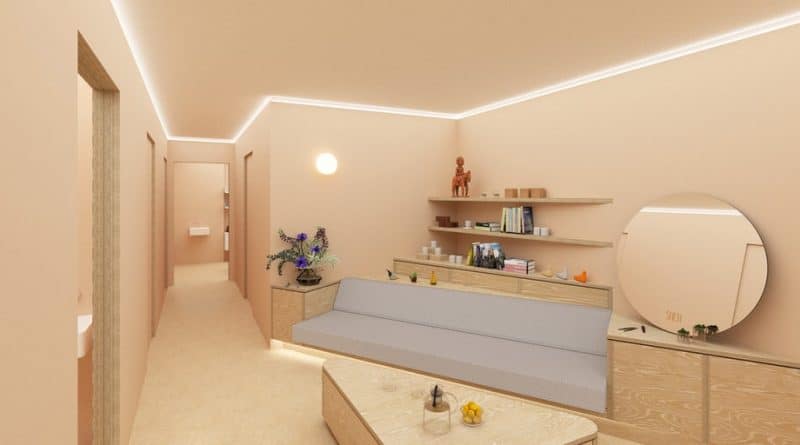The Case for Opening a New Store Right Now | Intelligence, BoF Professional
NEW YORK, United States — The timing could not have been worse for Nina Sarin Arias. The womenswear designer’s first store, in SoHo, was set to open in March, just as the city was locking down, and her customers were fleeing to second homes in the Hamptons and beyond.
Arias said she had opportunities to walk away. But she felt she had little choice but to go ahead with a late-summer opening. A store was the natural course of growth she envisioned for her namesake label, and the investment was already made.
“Once you secure a space, you [either] have to go with it or not, and I made the decision to go with it, to take that risk,” Arias told BoF. The store opened in early August.
Amid the pandemic, retailers across the world are permanently closing locations at the fastest rate on record. Foot traffic in stores remains 50 percent below normal levels. Landlords and tenants are suing each other over unpaid rent.
No matter how much AI they invent or digital whatever, nothing will surpass human interaction.
But despite the chaos, there are still plenty of brands, from solo entrepreneurs to global giants, doubling down on physical retail. Some see an opportunity in the proliferation of empty storefronts and plummeting rents. Others are betting that not even a pandemic can keep people from shopping, and that no digital innovation is able to replace the joys of browsing a well-designed store.
“Now more than ever, people have been locked up in their homes, dying to interact,” said Jessica Richards, owner of Shen Beauty, which will soon move into a new, larger skin-care and makeup boutique in Brooklyn’s Cobble Hill neighbourhood. “And no matter how much AI they invent or digital whatever, nothing will surpass human interaction.”
Richards was midway through moving into her new storefront when the pandemic forced New York-area stores to close in March, including her 10-year-old existing space, also in Brooklyn. Her new store is three times bigger — and rent three times pricier — allowing for more shelf space and additional room for treatments like hydra-facials and microblading.
But opening a store, a risky proposition even before Covid-19, is even trickier to pull off successfully today. The pandemic has taught consumers how to do the majority of their shopping online. A store will only be useful today if it could offer one of two functions, according to longtime retail executive Andrea Wasserman: speed and convenience, or an exceptional brand experience. Anything less will be written off by shoppers.
Shen and Arias are two of seven retailers interviewed by BoF about their recent or upcoming store openings. All of them said they were able to renegotiate their leases to receive more favourable terms. And all of them say that brick-and-mortar shopping, no matter how much longer the crisis lasts, can never be replaced by e-commerce. Will it be the right bet?
O.N.S. (Nolita, NYC)
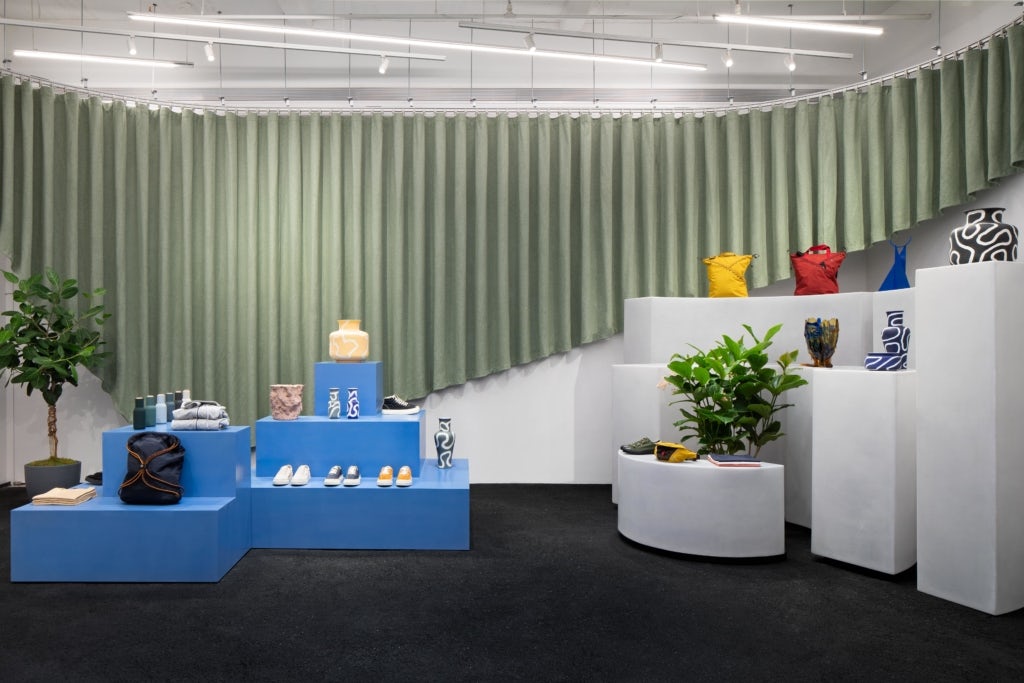
Source: Courtesy
“The physical manifestation of the brand is irreplaceable on a loyalty building standpoint”
When his last SoHo landlord kicked him out to make room for Alexander McQueen in late 2018, Brian Chung decided he was ready to commit to a more suitable location for his menswear brand, O.N.S.
In February 2019, Chung signed a 10-year lease on Mulberry Street between Spring and Kenmare Street, with intentions to open that November. But then inspiration struck: “I think I was naive with the original design,” Chung said. “I was taking cues from formula retail, in terms of how products are merchandised and placed on the floor.”
Instead, Chung scrapped his plans for something edgier, allowing the 2,700-square-foot space to be less retail-centric and more balanced toward events.
One of his favourite features now, Chung said, is a 100-foot custom curtain system, typically used by theatres, to be used as both a backdrop and store divider during events. All of the racks and shelving in the store are also moveable, so technically there are no fixtures — again, designed to make the space party-friendly.
When coronavirus struck, the opening date was pushed back even further. Chung’s landlord deferred rent payments and agreed to a discount. Walking away was never an option, however, even if it may take months or even years for the space to be fully utilised for events.
“The physical manifestation of the brand is irreplaceable on a loyalty building standpoint,” he said.
Chung cited a peculiar inspiration for his ambitions in physical retail: Abercrombie & Fitch at its peak in the late 90s and early 2000s.
“Looking back now, that was pure brand building — the whole environment, the music, the strong fragrance,” he said. “You knew it was there in the mall before even going in. It’s obnoxious but I don’t think any brand now is able to build what they built.”
Off-White (Miami, London, Milan and Bangkok)
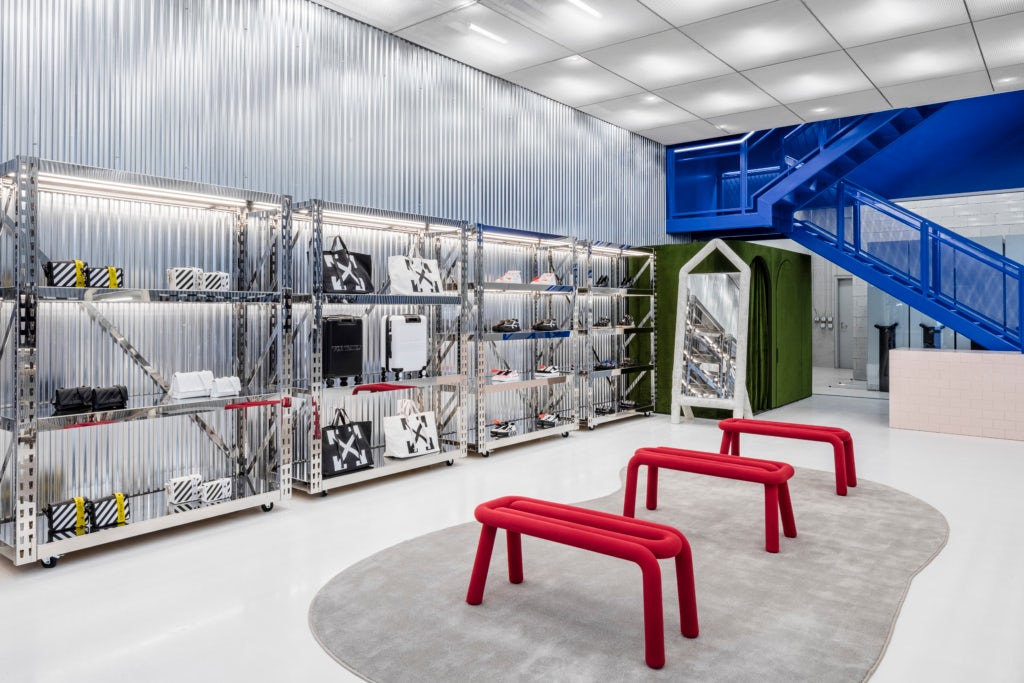
Source: Courtesy
“[Digital and brick-and-mortar] cannot live without each other.”
Most of Off-White’s shoppers were born with a device in their hands.
At least that’s according to Andrea Grilli, the chief commercial officer of New Guards Group and chief executive of NGG Brands, the label’s parent company. Even so, the majority of Off-White’s sales take place in physical retail, and Grilli said he anticipates this to continue.
“Digital and brick-and-mortar are definitely connected,” he said. “Those two channels cannot live without each other.”
“Our goal is to achieve 30 percent [of total sales] in digital in the next three years but that’s still 70 percent in brick-and-mortar,” Grilli told BoF. Even in the midst of the pandemic, he added, while overall retail traffic dipped 20 percent in Off-White existing stores in New York and Las Vegas, sales have actually increased.
Given these projections, Off-White recently opened a Miami flagship store in the Design District, as well as other locations in Milan and Bangkok. A new London store will open next month. That’s in addition to Off-White’s existing fleet of 60 locations prior to the pandemic.
Every store looks and feels unique, and even offers its own exclusive capsules, Grilli said, using the term “glocal” to describe the brand’s approach to physical retail. The Miami store, for instance, will highlight designer Virgil Abloh’s activewear collection.
Arias (SoHo, NYC)
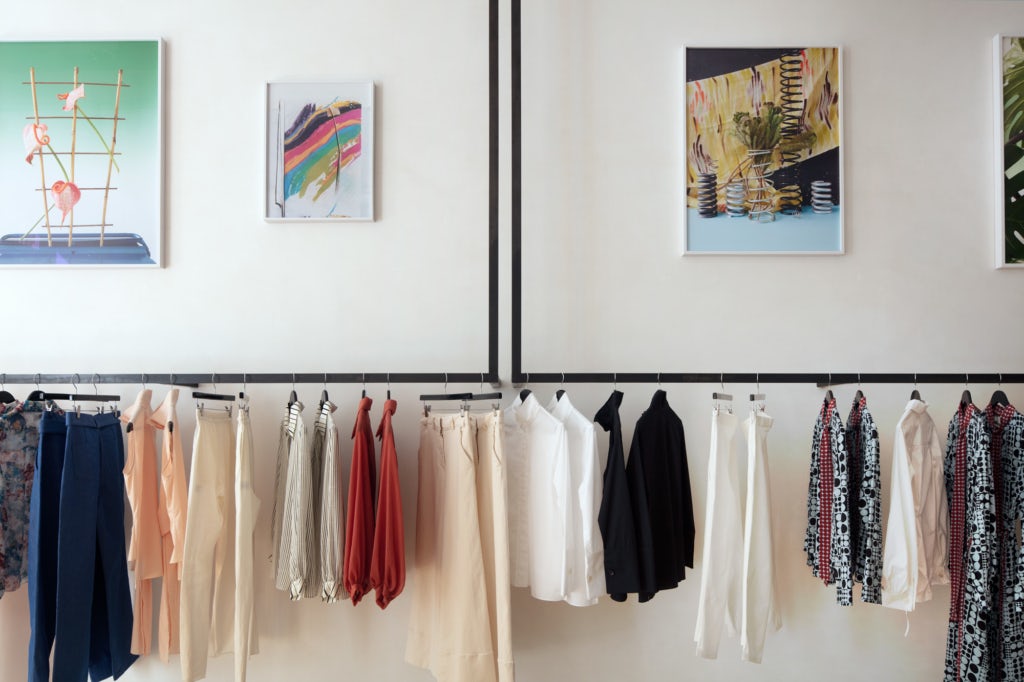
Source: Vicente Munoz
“Our clients want to know about the brand and what we stand for … And you can only do it in a brick-and-mortar store.”
Arias’ label has quietly grown since its founding in 2016 via online sales and wholesale retail. The natural next step, the designer decided last year, was a store of her own.
“I wanted to provide the world of Arias to her — it’s more than just clothes,” she said. “It’s the mould of my world into the store.”
By the time the pandemic shut down New York in March, her vision had come to fruition. “We had everything set up,” she said, of her store on Broome Street.
The decision to go through with the opening, albeit at a later date, she added, felt like a gamble. But she was able to renegotiate her lease and welcome her first customers earlier this month. Foot traffic has been decent. SoHo, a ghost town during the lockdown, has perked up now that many of the neighbourhood’s shops and restaurants have reopened, though tourists have yet to return.
The store is hosting Zoom styling appointments and a collaboration with Andrew Kreps Gallery, showing the work of artist and photographer Annette Kelm, to boost its profile with potential customers. The goal is to create a “destination” for Arias’ customers, many of whom are spending most of their time in the Hamptons and visiting the city for shopping trips a few times a month.
“Our clients want to know about the brand and what we stand for, and that’s something I’ve always wanted to be able to communicate and you can only do it in a brick-and-mortar store,” Arias said. “Independent boutiques are able to do that because we curate based on our love, and our stores tell a story.”
Shen Beauty (Cobble Hill, Brooklyn)
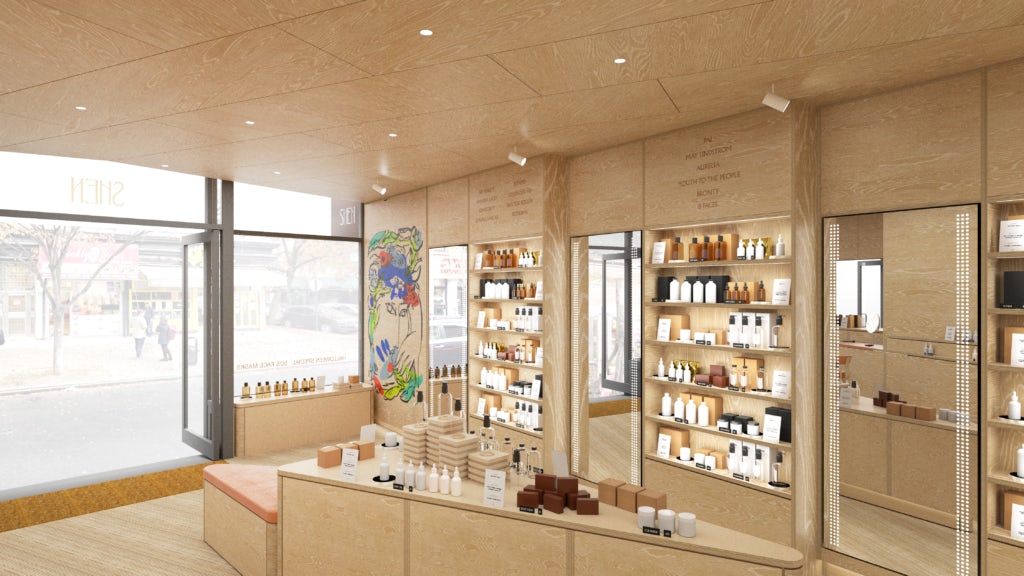
Source: Courtesy
“I believe in shopping for skincare in-person.”
Richards takes pride in the fact that her boutique was the first in Brooklyn to carry Bobbi Brown products. In the decade since, Shen grew to be known for much more than that: it became a destination known for indie clean beauty brands among locals, Manhattanites and tourists alike.
As a fashion and beauty consultant as well, she learned from the industry: by the time she was ready to usher in the next iteration of Shen, she knew what she wanted. For instance, dozens of mirrors on display — “So that 30 people could be in the store at the same time and everyone would have their own,” she said. Also more treatment rooms, for facials, microblading and makeup appointments.
For now, visible health and safety measures will also be a big part of the new store, which opens Sept. 1, Richards said. It will include a newly installed sink, temperature station, air filtration system and lots of hand sanitiser formulated by Richards herself. A minor inconvenience compared to the existential shock that struck Shen and its employees in March, Richards recalled.
“I’m a crier,” she said. “I can’t just sit down and take it. In March, we were all packed and ready for the new store. And then I had to lay off my entire staff.”
But things got better. Online sales grew by 1,500 percent in the following months. The city began to reopen in June. Plus, Richards wasn’t ready to walk away from her own investments in the store, which has been built out entirely in sustainable plywood and filled with personal touches of decor, such as repurposed Thonet stools.
And even with online sales surging, Richards maintained e-commerce isn’t her focus.
“I believe in shopping for skin care in-person,” she said.
t.a. (Meatpacking District, NYC)
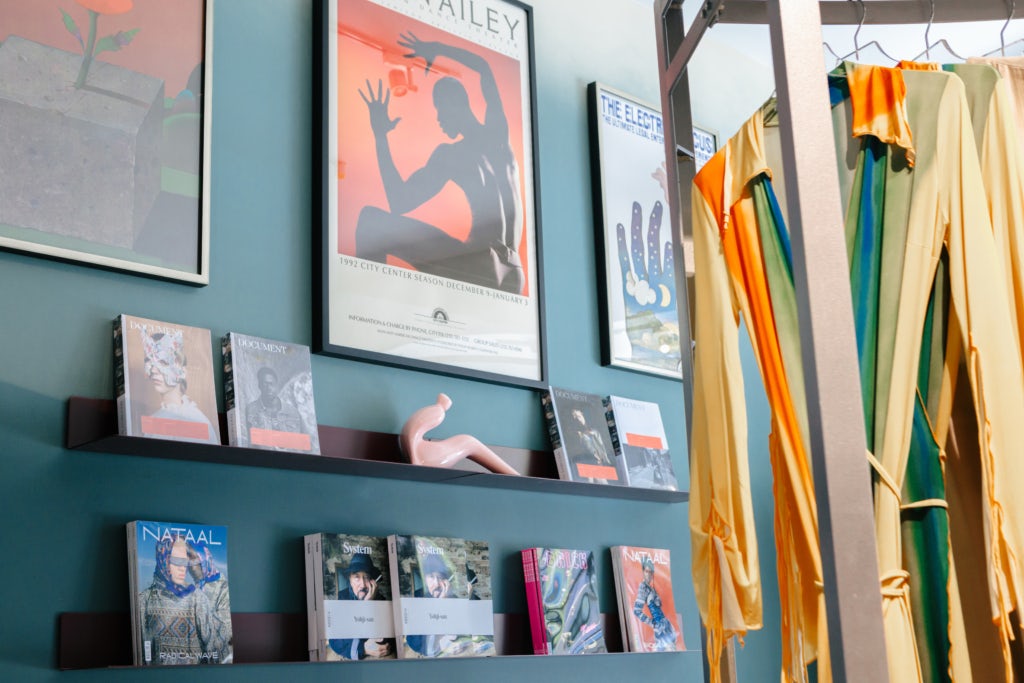
Source: Courtesy
“We were looking for the store to go to to find that one rare piece.”
Growing up, Telsha Anderson used to drive into the city from her hometown in New Jersey to visit Opening Ceremony, back when the Howard Street boutique defined a new kind of fashion in downtown Manhattan.
Now, Anderson is setting out to create her own version of a retail haven: a 770-square foot multi-brand store in the Meatpacking District, stocked with in-crowd favourites like PRISCAVera and Barragán as well as more hard-to-encounter brands including Mozh Mozh, a Peruvian knitwear label, and Wesley Harriott, an emerging designer in the British fashion scene.
Having worked in social media and PR, Anderson and her peers in the industry were “constantly looking for new brands and fresh perspectives,” she told BoF. “We were looking for the store to go to to find that one rare piece.”
The solution was t.a., her art-and-vintage-furniture-adorned store for which she is the owner, buyer and in-house stylist. Originally set to open in March, Anderson instead launched the store online, when consumers were still confined to their homes in quarantine. After months of uncertainty — as well as successful rent negotiations with her landlord — Anderson opened the doors to t.a. on July 8. Already, in-store sales have spiked, exceeding e-commerce, Anderson said.
“Our goal is to work with artists of colour, whether that’s painters or designers,” Anderson said. “Opening Ceremony was a blueprint for myself to follow, but I want to continue to have designers of colour in the store and give them a platform, especially in an area of Manhattan where they’re often not represented.
Fabletics (multiple US cities)
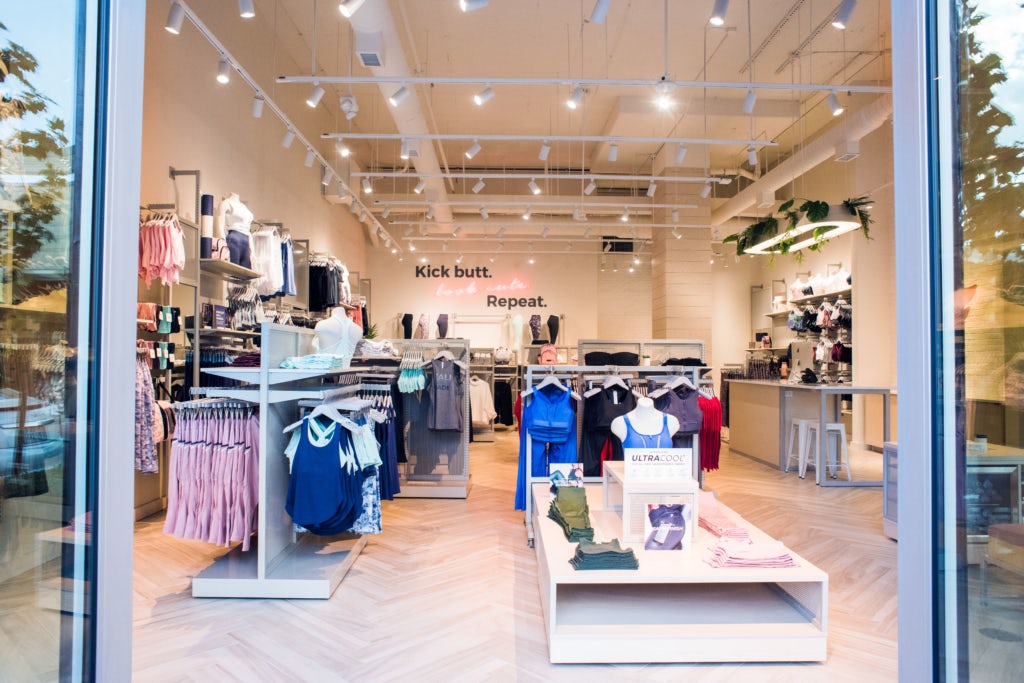
Source: Courtesy
“The idea is to meet the consumer wherever she is.”
While retailers like Zara and Nordstrom have announced store closures during the pandemic, Fabletics chose to focus on the success of big-box giants like Target and Walmart.
“Those essential businesses continued to be very robust during the closure so that showed us there was a big appetite for physical retail, but especially omni retail,” said Ron Harries, senior vice president, head of retail, at TechStyle Fashion Group, which owns the the activewear brand. “That allowed us to have confidence that the market will come back.”
Since pandemic restrictions began to lift in June, the Kate Hudson-founded activewear brand has opened eight new stores and has three more new locations planned in 2020. That’s not including the 12 “legging bars” that it will have opened in malls by the end of the year. These are kiosks typically manned by just one associate with a limited assortment of products.
The idea, Harries said, is to meet the consumer wherever she is, whether she wants to browse in person or buy online and return products at either a full-line store or a checkout station.
Like Off-White, Fabletics sees brick-and-mortar as an essential component of digital retail as well, citing the effect of stores as a means of attracting customers to the website too. It’s also introducing a new type of sales associates to its stores: omni associates, whose roles involve managing customer contacts through multiple channels, taking on roles such as selling to online shoppers via chat or video.
Rails (New York City and Los Angeles)
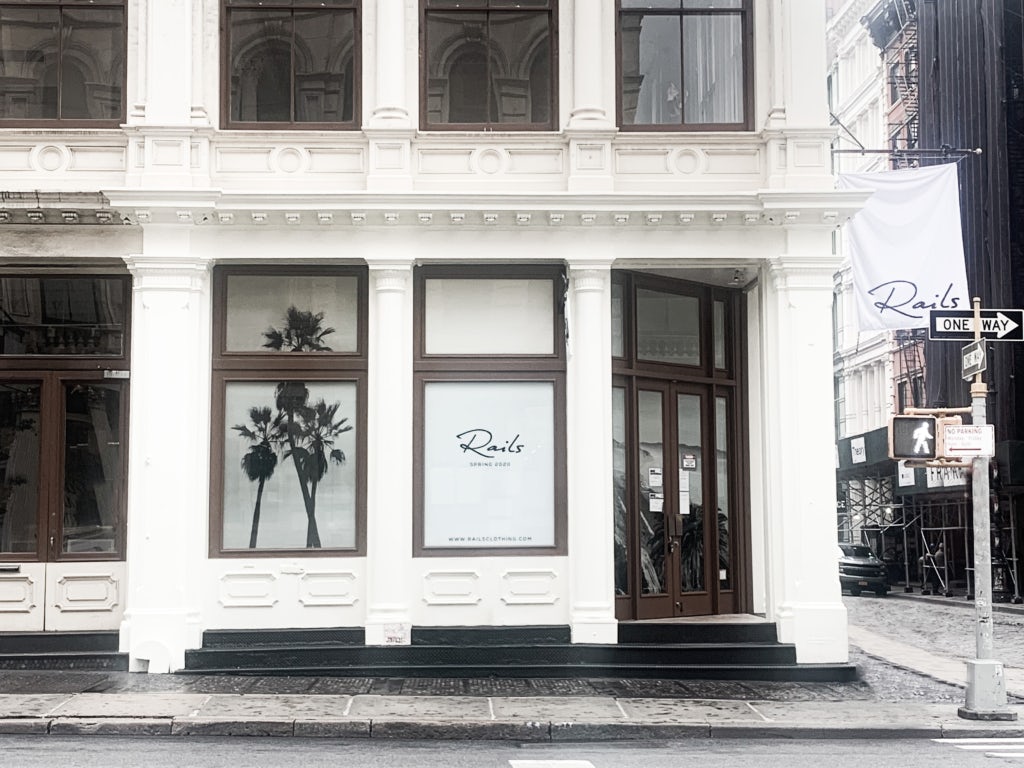
Source: Courtesy
“Our customers want to interact with actual products.”
The classic collared shirts made by Rails, a Los Angeles-based brand, are designed to be soft to touch and sustainable in their supply chain. But just looking at it on a web page wouldn’t quite justify the $160 price tag for a rayon-and-linen blend shirt.
That’s why the 12-year-old brand has long relied on department stores and other multi-brand retailers, as well as its own pop-up shop, to carry the products and reach new consumers.
In September, Rails will open its first permanent store in SoHo, to be followed by another in Los Angeles and San Francisco early next year.
Like other retailers interviewed, the label had planned on its SoHo flagship well before the pandemic, but took the opportunity to renegotiate its lease.
“We worked together to get through it and make sure nobody was bearing the burden of the pandemic,” said Rails Founder Jeff Abrams.
“Our customers want to interact with actual products,” he said. “If they want to shop in person, great. But if they want to shop virtually, that’s great too. Or our wholesale channels, that’s also available.”
Related Articles:
Tapping Into the Future of Physical Retail
To Launch Or Not to Launch? For New Direct-to-Consumer Brands, That Is the Big Question.
Where People Are Actually Shopping
No Tourists, No Commuters, No Customers: Thinking Beyond the Shopping District

